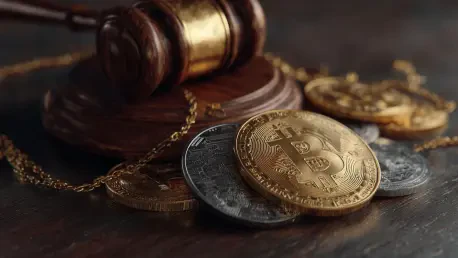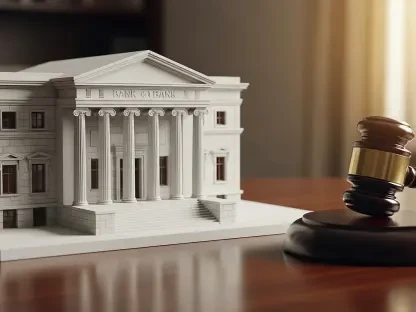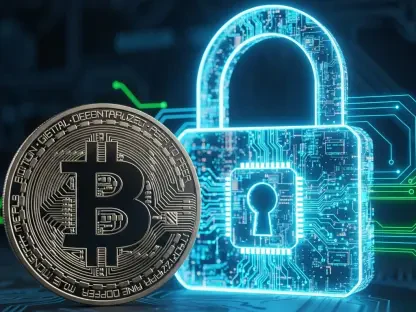Understanding the DeFi Landscape and Its Significance
The decentralized finance (DeFi) sector has emerged as a revolutionary force, reshaping how financial transactions occur without traditional intermediaries like banks. Built on blockchain technology, DeFi leverages smart contracts—self-executing agreements coded on platforms like Ethereum—to facilitate lending, borrowing, and trading directly between users. This innovation has unlocked access to financial services for millions globally, particularly in underbanked regions, while challenging conventional systems with its promise of transparency and autonomy.
Ethereum stands as the backbone of most DeFi applications, hosting a vast ecosystem of decentralized apps and protocols that drive a market valued at over $100 billion in total locked value as of this year. Key players include developers crafting these protocols, platforms like Uniswap and Aave enabling user interactions, and a growing base of individual and institutional users. Adoption trends show a steady rise, with transaction volumes on DeFi platforms often rivaling those of centralized exchanges, signaling a shift in how capital flows.
Yet, this rapid growth operates in a regulatory gray zone. Many jurisdictions lack clear guidelines for DeFi, leaving the sector vulnerable to exploitation and legal ambiguity. While some regions are beginning to draft frameworks, the absence of cohesive oversight globally poses risks to stability and trust. This regulatory lag sets the stage for high-profile incidents that could force a reckoning in how DeFi is governed.
The Peraire-Bueno Case: A $25M Heist in 12 Seconds
Details of the Alleged Exploit and Legal Charges
In April 2023, Anton and James Peraire-Bueno, two MIT-educated brothers, allegedly executed a staggering $25 million cryptocurrency theft in just 12 seconds by targeting Ethereum’s Maximum Extractable Value (MEV) system. MEV allows blockchain validators to reorder transactions for profit, but the brothers reportedly exploited a flaw in the system using sophisticated bots to preview and manipulate transaction blocks. Their method, known as a “sandwich attack,” involved placing trades around victims’ transactions to profit from price differences.
Further complicating the case, the brothers are accused of obscuring their gains through shell companies and privacy tools like Tornado Cash, a cryptocurrency mixer often associated with laundering. Charged with wire fraud and money laundering, they were arrested in May 2024, but their trial in a Manhattan federal court concluded with a mistrial in November of this year due to a deadlocked jury. This legal stalemate has left unresolved questions about the boundaries of such exploits in digital finance.
The technical precision of the attack, combined with the speed of execution, marks this incident as a landmark case in crypto crime. Prosecutors have described it as a deliberate act of theft, while the defense argues the brothers operated within the unregulated nature of the market. This clash of perspectives underscores the urgent need for clarity in legal standards governing blockchain interactions.
Impact and Immediate Reactions
The fallout from the alleged heist sent ripples through the cryptocurrency community, sparking intense debate on platforms like X. Opinions are sharply divided, with some labeling the brothers as ingenious for exposing system flaws, while others decry the act as a betrayal of trust that harms DeFi’s credibility. This polarization reflects deeper tensions about the ethos of decentralization versus the need for protective measures.
In response, the Ethereum Foundation and other stakeholders quickly moved to address vulnerabilities in the MEV mechanism, rolling out patches to prevent similar exploits. These actions highlight the reactive nature of blockchain security, often spurred by high-profile breaches rather than preemptive design. Industry experts have noted that such incidents, while damaging, can serve as critical learning opportunities for fortifying DeFi infrastructure.
Significantly, this case represents the first U.S. criminal prosecution tied to MEV exploitation, positioning it as a potential precedent for future legal actions. The attention it has garnered from regulators and developers alike suggests that the outcome—whether through a retrial or policy changes—could influence how such activities are classified and prosecuted moving forward.
Challenges in Blockchain Security and Legal Adjudication
The Peraire-Bueno incident lays bare the inherent weaknesses in DeFi systems, particularly within Ethereum’s MEV framework, where transaction ordering can be gamed for profit. These vulnerabilities are not merely technical but systemic, as the decentralized nature of blockchain resists centralized fixes, leaving gaps for exploitation. Each breach like this one erodes user confidence, especially when millions can be siphoned in seconds due to overlooked flaws.
Prosecuting such crimes presents another hurdle, as evidenced by the mistrial in this case. Jurors struggled to grasp the complex technical evidence surrounding blockchain and MEV, revealing a disconnect between cutting-edge technology and traditional legal processes. This difficulty in translating digital concepts into courtroom arguments points to a broader issue: the justice system often lags behind the pace of tech-driven crime.
Addressing these challenges requires a dual approach. On the technical side, enhanced security protocols and more robust validation mechanisms are essential to deter exploits. Legally, better education for jurors and specialized training for legal professionals on blockchain matters could bridge comprehension gaps. Until these measures are in place, the ethical ambiguities of an unregulated market will continue to complicate accountability.
Regulatory Gaps and the Push for DeFi Oversight
DeFi regulation remains a patchwork of incomplete policies, with MEV exploitation falling into a particularly murky area at the time of the brothers’ alleged actions. Without explicit rules defining such activities as criminal, cases like this one test the limits of existing fraud and theft statutes. This ambiguity has fueled calls from industry leaders for comprehensive guidelines that can adapt to DeFi’s unique structure.
The mistrial in the Peraire-Bueno case may have lasting implications for legal standards, especially as the U.S. navigates crypto policy in the wake of recent political shifts. From this year to 2027, legislative efforts could accelerate, potentially spurred by this incident to classify specific blockchain manipulations as actionable offenses. Such developments would signal a pivot toward stricter oversight, balancing the sector’s innovative spirit with necessary protections.
Globally, perspectives on DeFi regulation vary, with some nations advocating for harmonized international standards to prevent jurisdictional loopholes. Compliance and security measures are also critical for rebuilding trust in crypto markets, as users demand assurance against exploitation. Industry consensus points to a future where clearer rules could stabilize DeFi, provided they avoid stifling growth through overregulation.
The Future of DeFi: Balancing Innovation and Accountability
Looking ahead, the Peraire-Bueno case could catalyze significant shifts in DeFi practices, particularly in how security is prioritized. If a retrial or similar cases establish legal precedents, platforms may be forced to integrate stronger safeguards against MEV-related exploits. This incident might also inspire developers to rethink transaction validation designs, ensuring fairness without sacrificing decentralization.
Emerging technologies offer hope for addressing blockchain vulnerabilities, with innovations like improved consensus algorithms and privacy-preserving mechanisms gaining traction. These advancements aim to close gaps that attackers exploit, potentially restoring faith in DeFi systems. However, their implementation must keep pace with the ingenuity of malicious actors to be effective.
Consumer and investor sentiment toward DeFi is evolving amid such high-profile incidents and regulatory uncertainty. While enthusiasm for decentralized solutions persists, caution is growing, influenced by economic conditions and political will to impose controls. The trajectory of this sector will likely hinge on how well it navigates these external pressures while maintaining its core promise of financial inclusion.
Conclusion: A Turning Point for DeFi Regulation
Reflecting on the Peraire-Bueno case, it becomes evident that a single $25 million heist has exposed critical flaws in blockchain security and legal frameworks, serving as a stark reminder of the risks embedded in DeFi’s rapid expansion. This incident has pushed the industry to confront its vulnerabilities head-on. The mistrial itself highlighted how unprepared traditional systems are to handle the nuances of digital crime, setting a pivotal moment for change.
Moving forward, stakeholders face the urgent task of crafting updated regulations that can keep pace with technological leaps while preserving innovation. Policymakers need to collaborate with technologists to define clear boundaries for activities like MEV exploitation, ensuring accountability without hampering growth. Developers, on the other hand, must prioritize robust security in protocol design, learning from past breaches to fortify trust.
Investors and users alike deserve a DeFi ecosystem where risks are mitigated through transparency and oversight. By fostering dialogue across sectors and embracing adaptive solutions, the industry can transform this challenge into an opportunity for maturity. The path ahead demands a commitment to balancing creativity with responsibility, shaping a future where digital finance thrives under a framework of clarity and protection.









